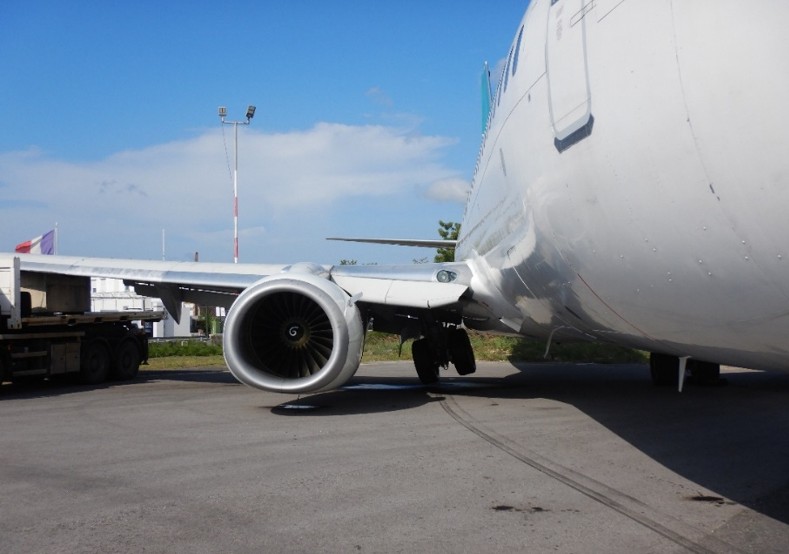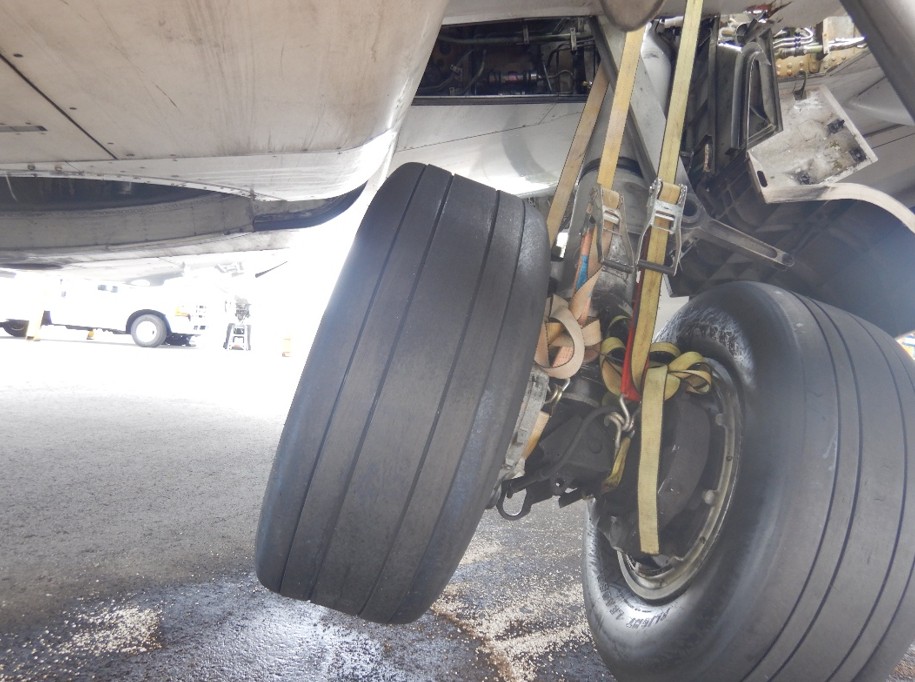Right main gear collapse on landing
WestJet
Boeing 737-800, C-GWSR
Princess Juliana International Airport (TNCM), St. Maarten
The occurrence
On 07 September 2025, a Boeing 737-800 aircraft operated by WestJet was conducting a flight from Toronto/Lester B. Pearson International Airport, Ontario, to Princess Juliana International Airport, St. Maarten, with 157 passengers and 6 crew members on board.
During the landing on Runway 10 in St. Maarten, the aircraft’s right main landing gear collapsed, causing the right engine nacelle to contact the runway surface. The aircraft sustained substantial damage and came to a stop on the runway. All occupants evacuated via the emergency slides.
Under the provisions of Annex 13 to the Convention on International Civil Aviation, the St. Maarten Civil Aviation Authority delegated the investigation to the TSB. The TSB deployed a team to the site and is investigating, working closely with the U.S. National Transportation Safety Board, the Federal Aviation Administration, Boeing, and WestJet.
Work completed as of October 2025
- The initial review of the flight data recorder data indicates that this was not a hard landing event.
- During the aircraft examination, the right gear aft trunnion pin was found fractured. The two portions of the aft trunnion pin were sent to the TSB Engineering Laboratory in Ottawa, Ontario, and are awaiting further examination.
- The right main landing gear was overhauled in 2016.
- The evacuation was a planned evacuation and was conducted on the left side of the aircraft. There was one reported minor injury sustained during the evacuation. No injuries were reported due to the gear collapse.
- The TSB is reviewing previous occurrences involving aft trunnion pin fractures on Boeing 737 aircraft.
Media materials
Class of investigation
This is a class 3 investigation. These investigations analyze a small number of safety issues, and may result in recommendations. Class 3 investigations are generally completed within 450 days. For more information, see the Policy on Occurrence Classification.
TSB investigation process
There are 3 phases to a TSB investigation
- Field phase: a team of investigators examines the occurrence site and wreckage, interviews witnesses and collects pertinent information.
- Examination and analysis phase: the TSB reviews pertinent records, tests components of the wreckage in the lab, determines the sequence of events and identifies safety deficiencies. When safety deficiencies are suspected or confirmed, the TSB advises the appropriate authority without waiting until publication of the final report.
- Report phase: a confidential draft report is approved by the Board and sent to persons and corporations who are directly concerned by the report. They then have the opportunity to dispute or correct information they believe to be incorrect. The Board considers all representations before approving the final report, which is subsequently released to the public.
For more information, see our Investigation process page.
The TSB is an independent agency that investigates air, marine, pipeline, and rail transportation occurrences. Its sole aim is the advancement of transportation safety. It is not the function of the Board to assign fault or determine civil or criminal liability.

